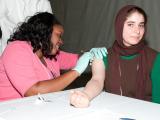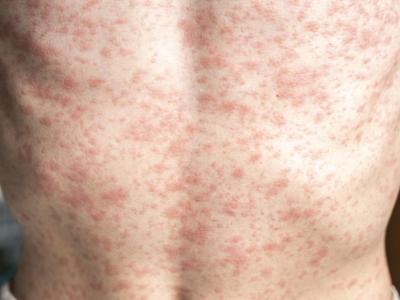With the United States experiencing an early start to its flu season, indicators edged higher again last week, with seven states now reporting widespread activity, the Centers for Disease Control and Prevention (CDC) said today in its weekly update.
The increase comes as federal, state, and local public health groups are wrapping up National Influenza Vaccination Week, an annual observance to highlight the importance of continuing flu vaccination through the holiday season and into the new year, especially in those at greater risk for complications of the disease, such as pregnant women, seniors, young children, and those with underlying health conditions.
Early snapshot of the season
In a separate update on the season so far in today's Morbidity and Mortality Weekly Report (MMWR), the CDC said flu activity started ramping up in early November, with H3N2 as the predominant strain.
Of 151 million to 166 million flu vaccine doses that pharmaceutical companies expect to make for the US market, 148.2 million have been sent out by distributors. So far vaccine uptake patterns are similar to this time last season. Surveys through early November suggest that 38.6% of the US population that is recommended to receive the vaccine has been immunized against flu. "This leaves approximately 3 out of 5 persons in the United States unprotected against influenza," the CDC team wrote.
One piece of good news is that CDC testing hasn't found any significant genetic drift in recently circulating flu viruses, suggesting that for now, the vaccine should offer similar protection to last season. Overall efficacy last season was 42%, but against H3N2—which was the dominant strain—protection was lower, at 34%.
Many of the vaccine formulations, however, are again expected offer less protection against the H3N2 strain because of problems related to egg-based vaccine virus production.
Four regions above baseline
Though the number of respiratory samples that tested positive for flu declined a bit last week, other markers rose or stayed the same.
Nationally, the percentage of clinic visits for flulike illness remained at 2.3%, still above the national baseline. Four of the 10 CDC regions are above their regional baselines for flu-related clinic visits.
The rate of flu hospitalization rose to 3 per 100,000 population, with levels highest in those age 65 and older (11.5 per 100,000 population).
Two more pediatric flu deaths were reported, one from H3N2 that occurred in mid November and the other from influenza B in late November, raising the season's total to seven.
Overall deaths from pneumonia and flu, an indicator that often lags other flu markers, are still below the epidemic threshold.
High flu activity, another measure of clinic visits for the disease, was reported by the same three states as last week: Louisiana, Mississippi, and South Carolina. The number of states reporting geographically widespread flu, however, rose from 4 to 7, most of them in the Southeast: Arkansas, Georgia, Louisiana, Massachusetts, Mississippi, Oklahoma, and Virginia.
A slower start to Europe's season
Though flu activity is still at low levels in European countries, the percentage of respiratory specimens that tested positive for the disease at sentinel sites increased a bit, to 8% last week, according to Flu News Europe, a joint report from the European Centre for Disease Prevention and Control and the World Health Organization Regional Office for Europe.
Slightly more influenza B than influenza A viruses have been detected, and, of the influenza A viruses subtypes, roughly equal proportions of H3N2 and 2009 H1N1 have been identified.
So far the small number of H3N2 viruses that have been characterized are antigenically similar to the vaccine virus.
See also:
Dec 8 CDC FluView report
Dec 8 MMWR report
Flu News Europe report for the week ending Dec 3



















